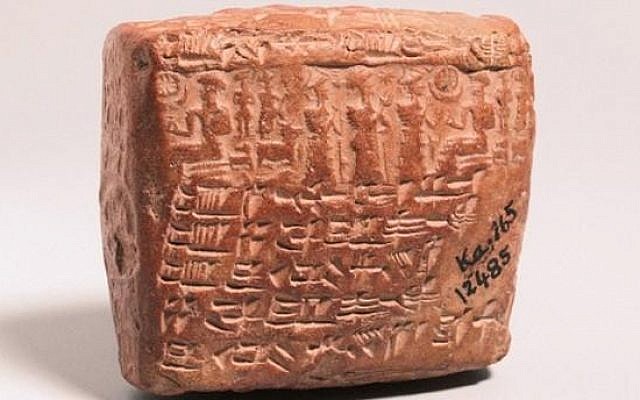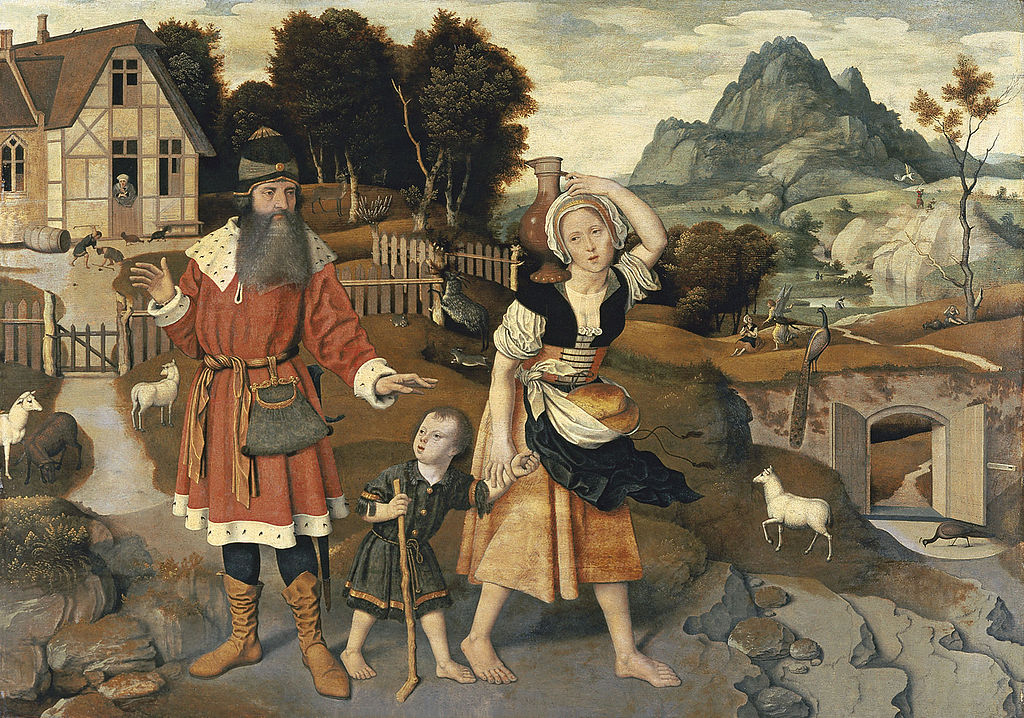 “Bądź silny i odważny” – Żydzi, sport, Warszawa
“Bądź silny i odważny” – Żydzi, sport, Warszawa
Mikołaj Gliński
 Formuła “żydowski sport” może wydawać się w pierwszej chwili wyrażeniem nietrafionym – w końcu sport jest czymś uniwersalnym i nie powinien podlegać tego rodzaju podziałom. Lektura albumu “Bądź silny i odważny” skłania jednak do takiego nazwania rzeczy.
Formuła “żydowski sport” może wydawać się w pierwszej chwili wyrażeniem nietrafionym – w końcu sport jest czymś uniwersalnym i nie powinien podlegać tego rodzaju podziałom. Lektura albumu “Bądź silny i odważny” skłania jednak do takiego nazwania rzeczy.
Udział mniejszości żydowskiej w sukcesach sportowych II Rzeczpospolitej był znaczący i – jak pisze autor tekstu towarzyszącego albumowi, profesor Daniel Grinberg – nieprzypadkowy. Jak to się stało, że naród, który w swojej tradycji nad ciało przekładał ducha, zaczął masowo uprawiać sport? I jak ten sport stał się elementem nowej ponadnarodowej więzi, narzędziem politycznej i społecznej walki – i wreszcie wyzwaniem rzuconym antysemitom?
W dwujęzycznym (polskim i angielskim) albumie “Bądź silny i odważny” możemy o tym przeczytać w pełnych erudycji komentarzach profesora Grinberga, a także – dzięki archiwalnym zdjęciom – zobaczyć, jak wyglądął żydowski sport w przedwojennej Warszawie.
Dlaczego sport żydowski?
Jak tłumaczy profesor Grinberg, sport żydowski wyrastał z zupełnie innej tradycji niż sport europejski, zakorzeniony w starogreckim ideale kaloskagathos, który Greków prowadził bezpośrednio do ćwiczeń fizycznych i igrzysk sportowych. “W tym samym czasie Żydzi szczycili się siłą biblijnego Samsona lub umiejętnościami Dawida w strzelaniu z procy, ale grecki kult ciała był im przez wieki zupełnie obcy, zaś męska nagość budziła zażenowanie” – tłumaczy profesor Grinberg.
“Bądź silny i odważny” [galeria]
Grinberg dokładnie pokazuje, w którym momencie rodzi się sport żydowski i te narodziny umieszcza w szerokim kontekście politycznym, społecznym i kulturowym. Zwraca uwagę na szersze zjawiska europejskie, jak przeszczepianie wzorców niemieckiego systemu Jahna, będącego silnie zmilitaryzowaną, opartą na zbiorowych ćwiczeniach gimanstycznych wersją kultury fizycznej – czy kopiowanie w całej Europie niemieckich Turnvereinów.
Jednocześnie pokazuje też specyfikę początków żydowskiego sportu, które były ściśle związane z ruchem syjonistycznym, a zwłaszcza z ideą Żyda-haluca – pioniera przygotowywanego w Europie do zadań czekających go w kolonizowanej, pustynnej Palestynie. “W odróżnieniu od cherlawego, nastawionego na jednostronny rozwój umysłowy klasycznego Żyda miejskiego utrzymującego się głównie z handlu, miał to być ktoś wszechstronny, nie stroniący od pracy fizycznej i rolnictwa” – wyjaśnia Grinberg i wprowadza pojęcie “muskularnego żydowstwa”.
Muskeljudentum
W ramach tej koncepcji zaproponowanej przez jednego z twórców syjonizmu, węgierskiego Żyda Maxa Simona Nordaua w 1898 r., to własnie muskuły miały być odpowiedzią na wyzwania epoki – to one miały zapobiec “degeneracji wielkomiejskich Żydów” i doprowadzić do ”regeneracji rasy żydowskiej”. Co ważne, dowartościowanie witalności i pracy fizycznej szło tu w parze z wyrabianiem nawyku do współdziałania i pracy zbiorowej.
Co ciekawe, dzięki przyjęciu się koncepcji Nowego Żyda i popularności syjonizmu i socjalizmu w środowiskach żydowskich we Wschodniej Europie, żydowskie kluby założone w Galicji Wschodniej na początku XX wieku wyprzedziły o dwa lata powstanie klubów polskich.
Makabi Warszawa
 Plakat 2. Makabiady w 1935 r.
Plakat 2. Makabiady w 1935 r.
Na pierwszy warszawski klub poczekać trzeba było do 1915 roku. Wtedy to w okupowanej przez Niemców stolicy powstał największy żydowski klub sportowy przyszłej II Rzeczpospolitej – symbol dumy modernizującej się żydowskiej mniejszości i ważne ogniwo w światowym ruchu Makabi (wywodzącym swą nazwę od Judy Machabeusza – przywódcy żydowskiego powstania 167-160 p.n.e.).
Grinberg opowiada, jak w czasie I wojny światowej sportowcy warszawskiego Makabi trenowani byli przez niemieckiego trenera, byłego policjanta z Bonn, Michaela Alberskircha. To on pododobno zaszczepił im iście pruski dryl. Jak głosi legenda, w 1916 r. Alberskirch w ciągu jednej doby przyswoił sobie bezbłędnie komendy w języku hebrajskim.
Siedziba Makabi mieściła się w prestiżowym Pasażu Simonsa (na rogu Długiej i Nalewek), klub dysponował też trzyhektarowym placem na Pradze z boiskiem i bieżnią (na terenach leżących dziś obok Stadionu Narodowego). Jego sportowcy zdobyli w międzywojniu wiele tytułów.
O sile polskiego Makabi może świadczyć jego sukces podczas zorganizowanej w Palestynie w 1932 r. pierwszej Makabiady (w 1924 r. reprezentacja żydowska ostatecznie nie została dopuszczona do zawodów olimpiskich). To właśnie 66-osobowa reprezentacja polskiego Makabi odniosła na niej drużynowe zwycięstwo. Tytułowe hasło “Bądź silny i odważny” to właśnie dziedzictwo światowego ruchu Makabi.
Obok Makabi w Warszawie istniały też inne kluby żydowskie, jak założony w 1923 r. klub “Gwiazda” (“Sztern”), związany z syjonistyczną lewicą. Tu najważniejszym sportem była piłka nożna.
 Mecz “Gwiazdy”, fot. materiały prasowe
Mecz “Gwiazdy”, fot. materiały prasowe
Więcej niż sport
Jak pokazuje Grinberg, specyfiką działalności żydowskich klubów było to, że nie ograniczały się one tylko do działalności sportowej. W Makabi tworzono kółka dramatyczne i dyskusyjne, zespoły muzyczne, orkiestry mandolinistów, sekcje malarskie i fotograficzne. Kluby były nieformalnymi ośrodkami wychowawczymi, edukacyjnymi i kulturalnymi i towarzyskimi:
– Posiadały biblioteki, orkiestry, organizaowały grupy samokształceniowe, wyjazdy krajoznawcze i życie towarzyskie. Nierzadko też dożywianie. Słowem: tworzyły mikrowspólnoty organizujące swoim członkom czały czas wolny – tłumaczy prof. Grinberg.
Dla części sportowców życie klubowe otwierało też nowe perspektywy nieobecne w szarej codzienności:
– Młodzi ludzie, których życie w całości wypełniała nauka i praca, w końcu tygodnia, po treningu, znajdowali w salkach klubowych odrobinę wytchnienia. Mogli pogrążyć się w lekturze kolorowych czasopism, porozmawiać z kolegami, flirtować z koleżankami klubowymi, posłuchać najnowszych nagrań Wiery Gran na płytach Odeonu, a nawet nauczyć się najmodniejszego aktualnie tańca. Niektórzy zaś przychodzili tylko po to by się umyć lub wykąpać. W domu brakowało często nie tylko patefonu, radia i prasy, ale nawet wanny i prysznica.
Sport i antysemityzm
 Plakat klub Gwiazda, fot. materiały prasowe
Plakat klub Gwiazda, fot. materiały prasowe
Grinberg pokazuje też, w jaki sposób sport stawał się orężem w walce z uprzedzeniami i stereotypami.
“Żydowscy sportowcy przywołujący pamięć powstania Machabeuszy lub króla Dawida, usiłowali własnym przykładem podważyć uprzedzenia mocno ugruntowane przez wieki nie tylko na ziemiach polskich, ale i w całej Europie. Dlatego mężczyźni chętnie pokazywali się w sportowych kostiumach, szukali sukcesów w sportach uważanych za bastion ‘rasy aryjskiej’, takich jak boks, automobilizm, lub piłka nożna”.
Równie istotne okazują się związki łączące żydowski sport – zwłaszcza wyrabiające fizyczną krzepę zapasy, podnoszenie ciężarów, boks – z antysemityzmem i pogromami, przed którymi należało się bronić.
Sportowcy bardzo często tworzyli grupy samoobrony – prawdziwe bataliony bojowników. W 1919 r. takie ćwiczenia odbywały się na dziedzińcu synagogi Nożyków na ul. Grzybowskiej. Na pobliskiej Prostej znajdowała się szkoła handlowa, której uczniowie mieli zwyczaj napadać na Żydów, gdy wychodzili ze szkoły po lekcjach. Jak wspomina jeden z weteranów Makabi Warszawa, ataki te ustały po kilku starciach z członkami żydowskiej samoobrony.
To za sprawą tego pokolenia – pisze Grinberg – słabł stereotyp gnuśnego rachitycznego Żyda – tchórza i niezguły.
W przypadku kobiet sport mógł też odgrywać rolę emancypacyjną. Autor przypomina historię żydowskich pływaczek, które w 1925 r. – nie obawiając się skandalu wywołanego kostiumami pływackimi – skakały do Wisły z mostu Kierbedzia. Po pokazie wezwano Polaków do powtórzenia wyczynu, ale nikt nie podjął wyzwania.
Najpotęzniejsza mucha Europy
Album to jednak przede wszystkim wiele mikropowieści, opisanych świetnym piórem Grinberga i zilustrowanych archiwalnymi zdjęciami wygrzebanymi przez Macieja Sadowskiego, autora m.in. cyklu fotobiografii poświęconych Korczakowi, Kapuścińskiemu czy Janowi Karskiemu. Taką mikropowieścią jest historia pięściarza Szapsela Rotholca (1913-1996), ulubieńca warszawskiej ulicy, najpotężniejszej “muchy” Europy (u szczytu kariery ważył mniej niż 35 kilo). W 1936 pojechał na Olimpiadę do Berlina reprezentować Polskę – po powrocie za złamanie bojkotu faszystowskich igrzysk został usunięty z żydowskiego związku zecerów. Odtąd zarabiał an życie jako szofer-mechanik. Jako reprezentant Polski Szapsio w 1938 po Nocy Kryształowej pokonał zawodnika hitlerowskich Niemiec Nikolasa Obermauera.
Rotholc walczył w kampanii wrześniowej. W 1940 r. wraz z żoną i dzieckiem trafił do warszawskiego getta, gdzie znalazł pracę w żydowskiej policji wspomagającej działania Judenratu. Oskarżony o brutalność wobec ludności getta i wysługiwanie się Niemcom, przeżył zamach Żydowskiej Orgaznizacji Bojowej, a potem ukrywał się poza gettem. Przeżył, czego – jak pisze Grinberg – nie mogli mu wybaczyć niektórzy rodacy. Po wojnie został skazany na dwa lata wyłączenia ze społeczności żydowskiej i trzy lata zawieszenia praw obywatelskich. W 1949 wyemigrował do Belgii, a potem do Kanady, gdzie pracował jako kuśnierz. Zmarł w zapomnieniu.
Grinberg opisuje też losy Heleny Bersohn, pochodzącej z wielodzietnej rodziny, córki ortodoksyjnych Żydów, która w 1931 r. jako siedemnastolatka zdobyła mistrzostwo Polski w dysku. Była czołową polską lekkoatletką, zanim w 1933 wyjechała do Palestyny, gdzie wielokrotnie biła rekordy kraju.
Z albumowych fotografi i z komentarzy Grinberga wyłaniają się zapomniane postaci: mistrzyni skoków do wody Eugenia Frydman, gwiazda tenisa stołowego Sztokfisz, Ernest Wittman – tenisista Legii Warszawy i poliglota, który wielokrotnie grał w parze deblowej z królem Szwecji Gustawem V; pływak, olimpijczyk, wielokrotny mistrz i wicemistrz Polski Lejzor Ilja Szrajbman, który zginął w getcie warszawskim w 1943 (był związany z konspiracją ZWZ).
Gambit Winawera
Fascynacja historią żydowskiego sportu prowadzi Grinberga wgłąb XIX stulecia i do historii życia Szymona Winawera (1838-1920), określanego tu mianem protoplasty żydowskiego sportu. Wybitny szachista (do historii przeszedł gambit i wariant obronny nazwane jego imieniem) podczas zagranicznych startów zawsze podkreślał, że reprezentuje Polskę, a nie Cesarstwo Rosyjskie. Z tego powodu odmówił m.in. startu we wszechrosyjskim turnieju w Petersburgu w 1879 (cztery lata wcześniej w tym mieście pokonał całą rosyjską czołówkę, ze słynnym Czigorinem na czele). Dzięki erudycji Grinberga wiemy też, że w Warszawie Winawer grywał w cukierni Semadeniego, i że nierzadko dawał tam mata Bolesławowi Prusowi.
Żydowscy szachiści to zresztą osobny i szeroki temat. Oddzielny fragment Grinberg poświęca Dawidowi Przepiórce, pierwszemu oficjalnemu mistrzowi Polski w szachach (1926), a czyta się to jak porywającą sportową relację sprzed lat:
“Podczas haskiej Olimpiady szachowej z 1928 r. 48-letni Przepiórka pełnił z powodzeniem podwójną funkcję: kapitana i kierownika drużyny. Debiut w rozgrywkach tej rangi przyniósł naszym reprezentantom brązowy medal, a kapitanowi satysfakcję ze zmuszenia do kapitulacji Holendra Maksa Euwe – przyszłego mistrza świata. Jeszcze lepiej spisała się drużyna polska (złożona prawie w całości z graczy pochodzenia żydowskiego: Rubinstein, Tartakower, Przepiórka Frydman, Makarczyk) podczas III Olimpiady rozegranej w Hamburgu (1930). Akiba Rubinstein i Ksawery Tartakower zapewnili złoty medal wspaniałą grą na dwóch pierwszych szachownicach, zaś mistrz Przepiórka dostroił się do ich poziomu na trzeciej.”
Przepiórka zginął w Palmirach w 1940 r. – aresztowany wcześniej za udział w nielegalnym pod okupacją turnieju szachowym. Grinberg pisze, że gdyby był młodszy, mógłby przeżyć Zagładę jak jego koledzy, którzy latem 1939 roku popłynęli do Buenos Aires bronić polskich barw na kolejnej Olimpiadzie.
Autor: Mikołaj Gliński, 10.7.2014
“Bądź silny i odważny” – Żydzi – sport – Warszawa
teksty: Grażyna Pawlak, Maciej Sadowski, Daniel Grinberg
opracowanie graficzne: Maciej Sadowski
wydanie dwujęzyczne: angielskie i polskie
Fundacja Mojżesz Schora, Warszawa 2013
twoje uwagi, linki, wlasne artykuly, lub wiadomosci przeslij do: webmaster@reunion68.com








